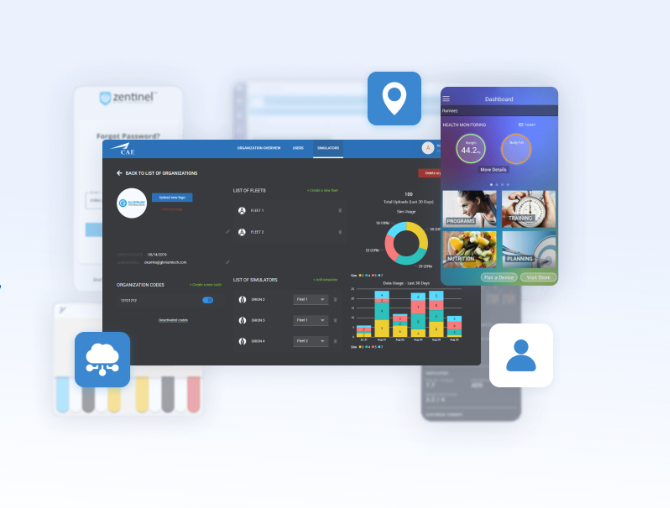calculating software development costs

Introduction
Software development is a vital aspect of modern business operations, but understanding and managing its costs can be challenging. In this article, we'll delve into the intricacies of calculating software development costs, exploring various factors, methods, and tools involved in the process.
Understanding Software Development Costs
Software development costs encompass a wide array of expenses incurred throughout the development lifecycle. These costs are influenced by several factors, including the complexity of the project, technology stack, team size, and project timeline. Understanding these factors is crucial for accurately estimating and managing development expenses.
Factors Influencing Development Costs
The cost of software development is influenced by various factors, such as:
- Project Scope: The breadth and depth of project requirements significantly impact development costs.
- Technology Stack: The choice of programming languages, frameworks, and tools can affect development expenses.
- Team Composition: The size and expertise of the development team contribute to overall costs.
- Timeframe: Rushed timelines often lead to higher development costs due to resource allocation and overtime expenses.
Different Phases of Software Development
Software development typically comprises several phases, each with its associated costs:
- Planning and Analysis: Initial phase involving project scoping, requirements gathering, and feasibility analysis.
- Design: Creating wireframes, UI/UX designs, and architectural blueprints.
- Development: Writing code, implementing features, and conducting iterative testing.
- Testing and QA: Identifying and rectifying software defects and ensuring quality standards.
- Deployment: Releasing the software to production environments and providing ongoing support.
Importance of Budgeting
Effective budgeting is essential for managing software development costs. By accurately estimating expenses and allocating resources wisely, businesses can ensure project success while avoiding budget overruns and delays.
Calculating Software Development Costs
Estimating software development costs involves careful consideration of various factors and employing suitable methodologies and tools.
Methods for Estimating Costs
Several methods can be used to estimate software development costs, including:
- Expert Judgment: Leveraging the expertise of experienced professionals to provide cost estimates based on similar past projects.
- Bottom-Up Estimation: Breaking down project requirements into smaller tasks and estimating costs for each component.
- Analogous Estimation: Drawing parallels between the current project and past projects to estimate costs.
- Parametric Estimation: Using mathematical models to estimate costs based on project parameters such as size, complexity, and team productivity.
Cost Breakdown by Development Phase
Understanding how costs are distributed across different phases of development is crucial for budgeting purposes:
- Planning and Analysis: Costs associated with requirements gathering, stakeholder meetings, and feasibility studies.
- Design: Expenses related to UI/UX design, architecture planning, and prototyping.
- Development: Costs of programming, code review, and integration efforts.
- Testing and QA: Expenses for testing environments, QA resources, and bug fixes.
- Deployment: Costs of deployment tools, infrastructure setup, and user training.
Tools for Cost Estimation
Numerous tools and software platforms are available to streamline the process of estimating software development costs, including:
- Estimation Software: Tools like COCOMO (Constructive Cost Model) and Function Point Analysis aid in accurate cost estimation.
- Project Management Platforms: Platforms such as Jira and Trello facilitate cost tracking and resource allocation.
- Time Tracking Software: Applications like Harvest and Toggl help monitor team productivity and billable hours.
FAQs about Software Development Costs
Common Questions about Cost Estimation
- What factors influence software development costs?
- How can I ensure accurate cost estimation for my project?
- Are there any cost-saving strategies for software development?
- What role does project management play in controlling development costs?
- Which cost estimation method is most suitable for small businesses?
- How do I handle unexpected cost overruns during development?
Answers to FAQs
- Factors influencing software development costs include project scope, technology stack, team composition, and timeframe. It's essential to consider these factors when estimating costs.
- Accurate cost estimation requires thorough planning, detailed requirements gathering, and leveraging past project data. Collaborating with experienced professionals can also enhance accuracy.
- Cost-saving strategies include prioritizing features, adopting agile methodologies, and outsourcing non-core tasks to reduce overheads.
- Effective project management is crucial for controlling development costs by optimizing resource allocation, tracking progress, and mitigating risks.
- For small businesses, bottom-up estimation methods are often more practical and accurate due to their focus on granular task-level estimates.
- Handling unexpected cost overruns involves proactive risk management, maintaining contingency reserves, and renegotiating project scope if necessary.
Conclusion
In conclusion, calculating software development costs is a multifaceted process that requires careful consideration of various factors, methodologies, and tools. By understanding the nuances of cost estimation and budgeting, businesses can effectively manage development expenses and ensure project success.
- Industry
- Art
- Causes
- Crafts
- Dance
- Drinks
- Film
- Fitness
- Food
- Games
- Gardening
- Health
- Home
- Literature
- Music
- Networking
- Other
- Party
- Religion
- Shopping
- Sports
- Theater
- Wellness
- News


